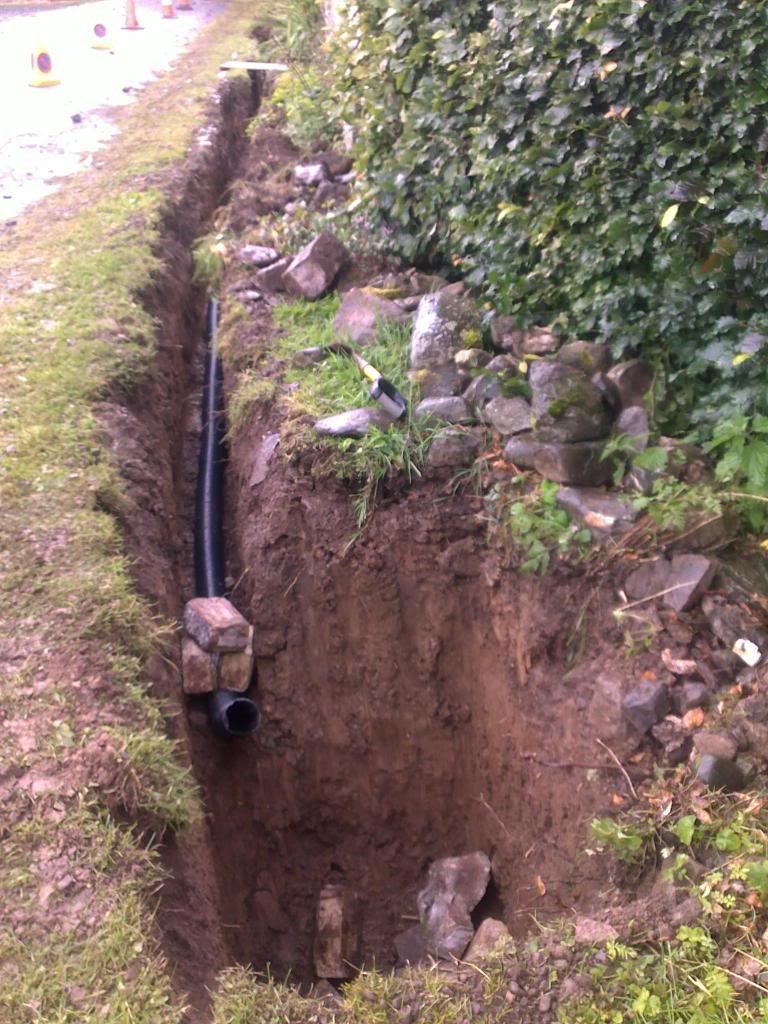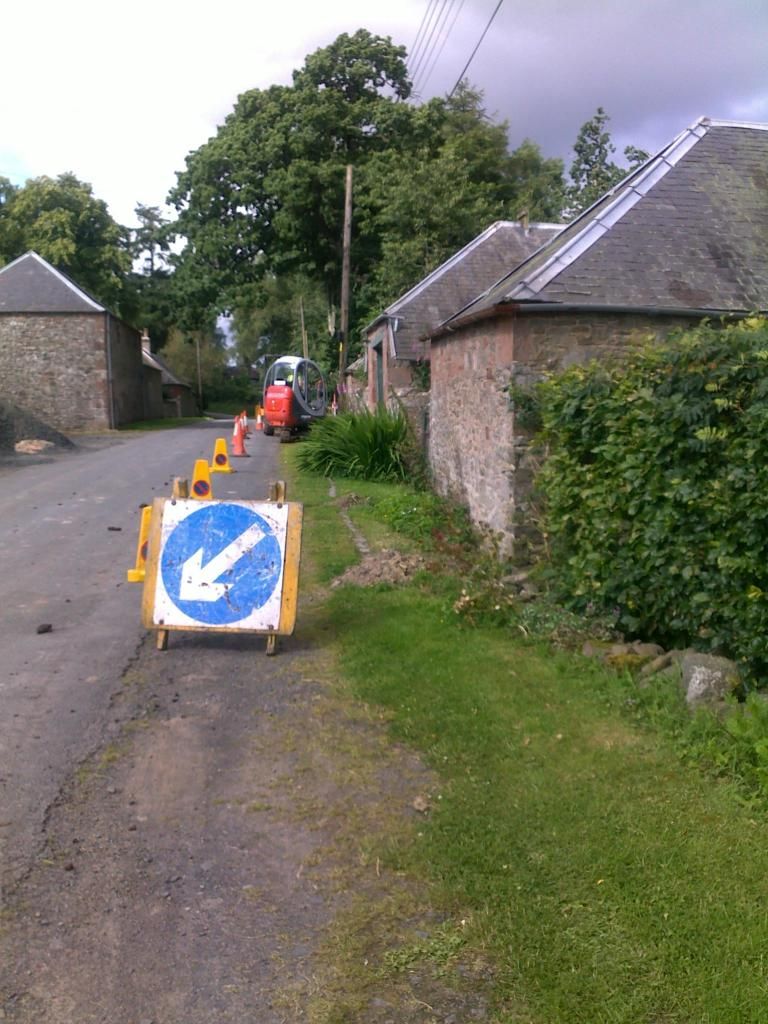- This topic has 18 replies, 11 voices, and was last updated 9 years ago by slowoldgit.
-
Old house/damp room question
-
TheFlyingOxFull MemberPosted 9 years ago
A bit of background first. It’s an old stone farmhouse, built on footings rather than foundations. One side of the house used to be a barn, so when converted may even just have a poured concrete base on top of earth. One wall is also about 3′ below the outside ground level.
We are having new carpets in, so today I set about removing the old one. However, it appears that water is soaking up through the floor on the corner where the house is below ground level, as all the previous underlay is damp. I’ve removed all the carpet and underlay which revealed some kind of polyurethane treatment on the concrete floor, rotten skirting boards and plaster falling off the walls.
As a result, I’m now thinking that I should forget the carpets for now and just gut the entire room, including the plasterboard walls & ceiling, repoint the internal stone wall right up to the roof/rafters , seal up to ground level with some kind of waterproofing paint/chemical, self-levelling compound the floor then re-cover with polyurethane, re-build internal walls and ceiling, re-plaster and then think about carpets again. This will take some amount of time and money, so does anyone have any better and/or cheaper ideas?
towzerFull MemberPosted 9 years agonot the same problem but at my parents bungalow we dug out the earth around the bottom of the walls and gravelled it to stop water sitting against the wall in wet earth[You can also get crates/plastic hollowcrates etc etc], we also rearranged the ****** heavy duty plastic sheets that the previous owner had used as weed membrane so they flowed away from the house … it did improve things.
brFree MemberPosted 9 years agoAs a result, I’m now thinking that I should forget the carpets for now and just gut the entire room, including the plasterboard walls & ceiling, repoint the internal stone wall right up to the roof/rafters , seal up to ground level with some kind of waterproofing paint/chemical, self-levelling compound the floor then re-cover with polyurethane, re-build internal walls and ceiling, re-plaster and then think about carpets again. This will take some amount of time and money, so does anyone have any better and/or cheaper ideas?
This or a combination of ideas sounds good.
Also when we took over our current place the outhouses were all wet at one end (road). Looks like over the years the land has ‘risen’ and then the road metalled. Water was then draining downhill as you’d expect.
I put a full length French drain in, and it has totally sorted them – obviously not sure whether you can. Filled with gravel above the sloping pipe through to a soakaway.
TheFlyingOxFull MemberPosted 9 years agoFrench drain would be ideal, but not sure if we can. There’s about 18″-24″ of hard packed soil/concrete(?) between the house and the road that I presume belongs to the council.
Oh well. Just as well I’m time rich/cash poor, as they say. I suppose it’ll keep me from loitering outside the local bookies smoking dog-ends.
slowoldgitFree MemberPosted 9 years agoIf you go the french drain route, plastic pipe is cheaper by volume than gravel. Think about using more than one.
andylFree MemberPosted 9 years ago+1 for french drain. Concentrate on getting rid of the water and allowing the place to breath.
The road is probably not helping the ground getting saturated if it’s the only porous bit. Do you have your deeds to check the boundary? I’d probably just do it anyway but i wonder if you would make the council do it? Probably not worth the effort.
csbFull MemberPosted 9 years agoI need to dig a French drain and am intrigued by the pipe idea, so basically it’s using them laid on top of each other along the trench as a high volume filler?
rwamartinFree MemberPosted 9 years agoFirstly, get the ground cleared from around the walls to allow evaporation to take place.
Don’t use cement or gypsum plasters on stone buildings. It’s important to use materials that allow moisture to pass in and out through the walls. Lime based mortars, renders and plasters should be used.
Lime is not a cheap solution but is well worth it. Used it on my stone house in Wales and it works.
Rich.
slowoldgitFree MemberPosted 9 years agocsb – never done it meself. It was on the eng-tips forum about ten years ago, ISTR it was appreciated on there. One of those things that sticks in the mind in case of future need.
In the photo above, some kind of fleece (cheap horto fleece would probably do the job) before the first pipe and the gravel around goes in will keep the natural clay from clogging things up. Then another pipe would save some gravel & money.
I would suggest you have sufficient cover on the top pipe for the gravel to ‘arch’ over the pipe, a depth about equal to the trench width.
This is very much amateur civil engineering. My obligation to you extends to the amount I’m charging you for this.
(edit) The extra pipe or pipes replace some of the gravel. Not all of it.
brFree MemberPosted 9 years agotbh the gravel wasn’t particularly expensive, as in I can’t remember the cost therefore it can’t have been expensive…
A better view to show the buildings – if I remember it was about £650 all in (vehicles, diesel, man to drive digger, pipe and gravel). Luckily we’ve space for the spoil.
Also check gutters and roofs, as water could just as easy be coming in/down.
wrightysonFree MemberPosted 9 years agoFrench/land drain may alleviate but not cure at those depths. Look to Heidi k11 products. Also if using land drain you really need to wrap in a geotextile or it will clog over time. It’s also worth introducing a mhole if possible as if laid correctly it can still be jetted/rodded.
slowoldgitFree MemberPosted 9 years agocsb – in case it helps. Bulldog tools do what they call ‘draining tools’, slim tapered spades to excavate a narrow trench for drainage. One might save you effort, spoil and gravel, I’ve no idea how your costing would work out. Or if a Plant Hire place might rent them out.
EdukatorFree MemberPosted 9 years agoWhat is a French Drain called in France?
Un drain. Un drain autour de la maison.
Using field drains is not such a good idea. Using lots of them is a lousy idea. Field drains are used to both dry and irrigate, transfer water from wet to dry parts. You don’t want to do that so you need proper French drain pipe which has holes in the top but not the bottom so water is removed to a soak away.
I looked into it for my house but realised I could cause more problems than I’ d solve (make the foundations unstable) so just dug a very shallow trench and filled with gravel. I also drilled out rotten mortar and replaced with a water resistant mix. Clay minerals absorb water and expand when wet, dry the ground and it will shrink, sometimes enough to crack foundations and walls.
rangerbillFull MemberPosted 9 years agoJust a couple of pointers by someone who spends to much time digging up old and ineffective french drains!
Make sure you test the fleece that you wrap the drain/pipe in. When you pour liquid on it (water/coffe/urine..whatevers to hand) it should soak straight in. If it beads (as many will) it is the wrong type, some are designed to work only with sufficient water pressure
Have a look at this: http://www.abg-geosynthetics.com/products/fildrain.html Ive got a couple of jobs next year where Im going to use it. Water soaks straight through the fleece then down the plastic membrane into a pipe (not supplied) You do not need any stone. Dig a trench, put sheet in, backfill
You can also tank your walls with a dimpled product that will stop water coming into house. Google ‘tank cellar’. Very similar idea to the above. Put it on your wall floor before boarding and flooring, it doesnt stop the water but allows it a safe passage behind and under your walls/floors
Hope that helps.enjoy
rangerbillFull MemberPosted 9 years agoI always assumed it was called a French drain because of Pierre-Marie-Jérôme Trésaguet, the french road builder who put ditches either side of his roads……?
But im probably very wrong
slowoldgitFree MemberPosted 9 years agoEd: you put the holes or slot at the bottom. This probably seems counter-intuitive until you think about it a bit.
The topic ‘Old house/damp room question’ is closed to new replies.


